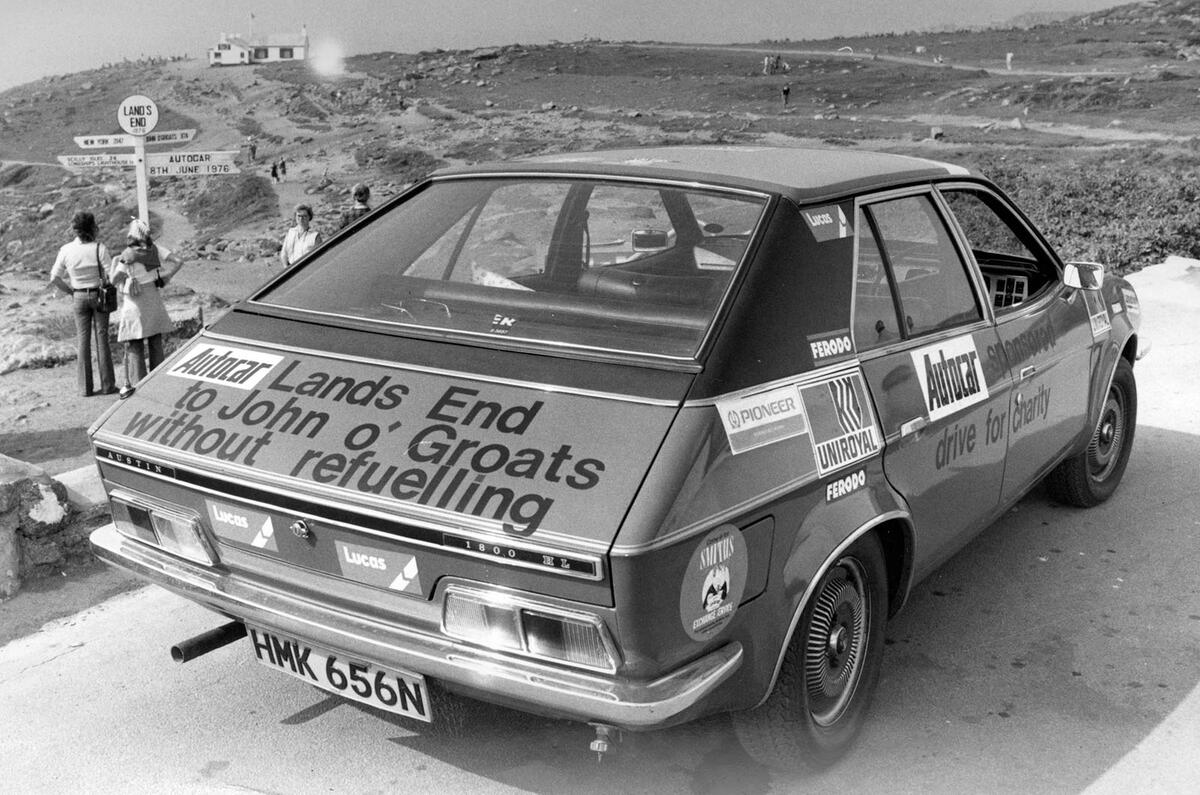Driving the country from toe to tip has always been an alluring challenge for motoring journalists.
For Stuart Bladon, Martin Lewis and photographer Peter Cramer, it was a way of investigating the frugality of Autocar’s Austin 1800 long-term test car, which had been converted to run a dual petrol-LPG fuel set-up.
“Our Austin retained its 16-gallon petrol tank, plus a 15-gallon cylinder in the boot for LPG,” wrote Bladon and Lewis in their account of the trip, which also raised money for charity. “With that lot, we argued, surely it would even go from Land’s End to John O’Groats without refuelling. Or would it?”
The team set off to their departure point, Land’s End, in the middle of that summer’s heatwave. “We decided that a late start would suit best, giving us most of the driving during the night. We kept the gas tank filled up to the warning line on the gauge, which, unfortunately, is on the tank in the boot; there is no direct read-off in the car. The drive to Cornwall was made on petrol, since we knew we might be in difficulty trying to refill the gas cylinder down there.”
In front of swarms of holidaymakers at Land’s End, they brimmed the petrol tank, making their departure at exactly 5pm. “Within half an hour we were stuck in the Penzance rush hour (if they call it that),” they reported. “Eventually we were clear and able to build up the speed again, to Tiverton.
“Long before the event, we had written to the AA for a route, which they furnished with due solemnity, showing the distance as 865.95 miles. However, we noticed that they took us from Okehampton down to Exeter, which the map clearly showed to involve extra mileage. Instead, we cut across, using Ordnance Survey maps. Once on the M5 we relaxed, switched to gas and pushed up the cruising speed to 60mph.”
As they neared Carlisle, they hit trouble. The team didn’t realise it at the time, but a faulty regulator valve had been feeding an over-rich mixture of LPG into the engine.
“Stuart was attempting sleep in the back when the car gave a jerk and then started to lose speed. ‘The gas has gone,’ came the muttered explanation. 330 miles covered on 15 gallons of gas meant we had barely cleared 20mpg, and that meant over 500 miles to do on the petrol.
“Could we believe the petrol gauge? If we could, then it might still be on. It was still over the half mark on the A9 near Balinluig. It became increasingly obvious that we should complete the distance safely enough for the speed to be increased to 50mph.”





Join the debate
Add your comment
And for your next trick....
.
Actually 2 tanks: One full of LPG the other petrol.